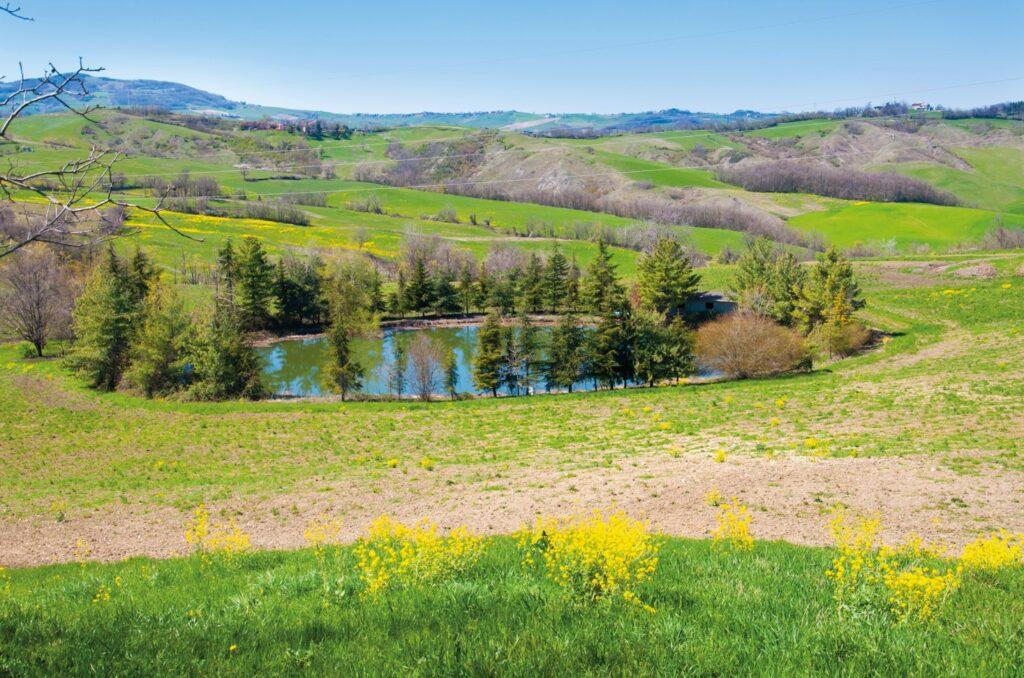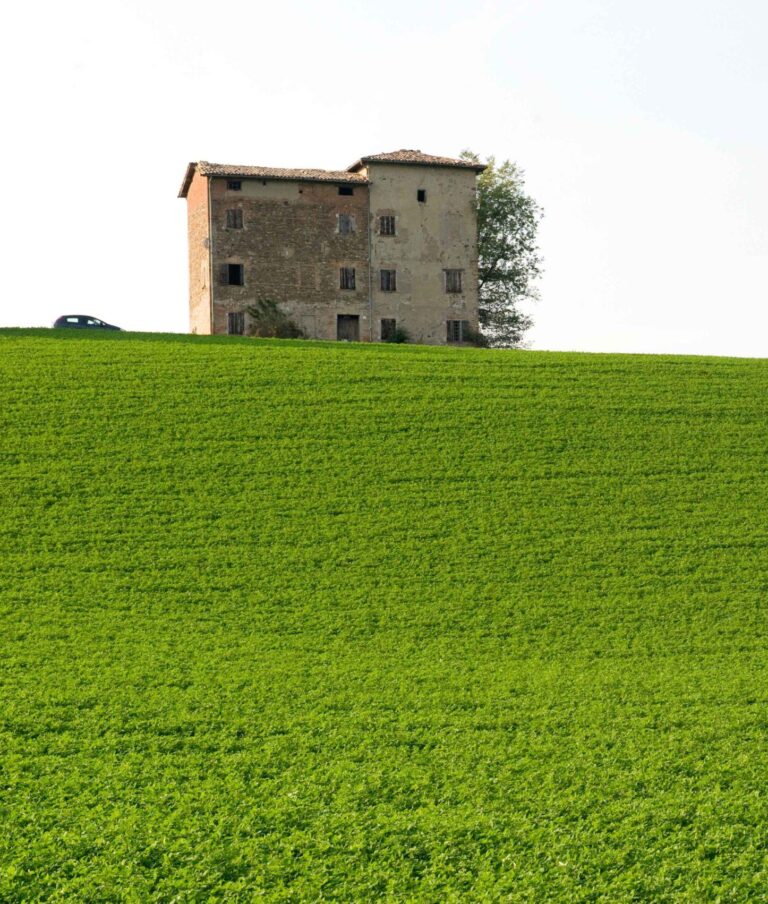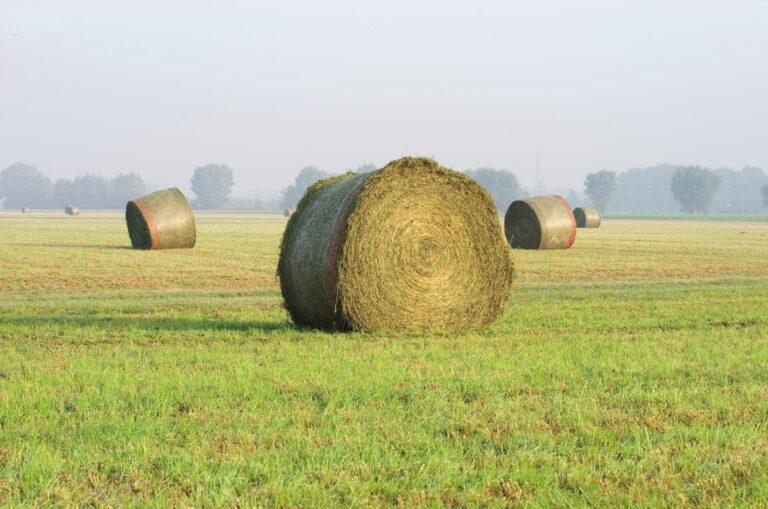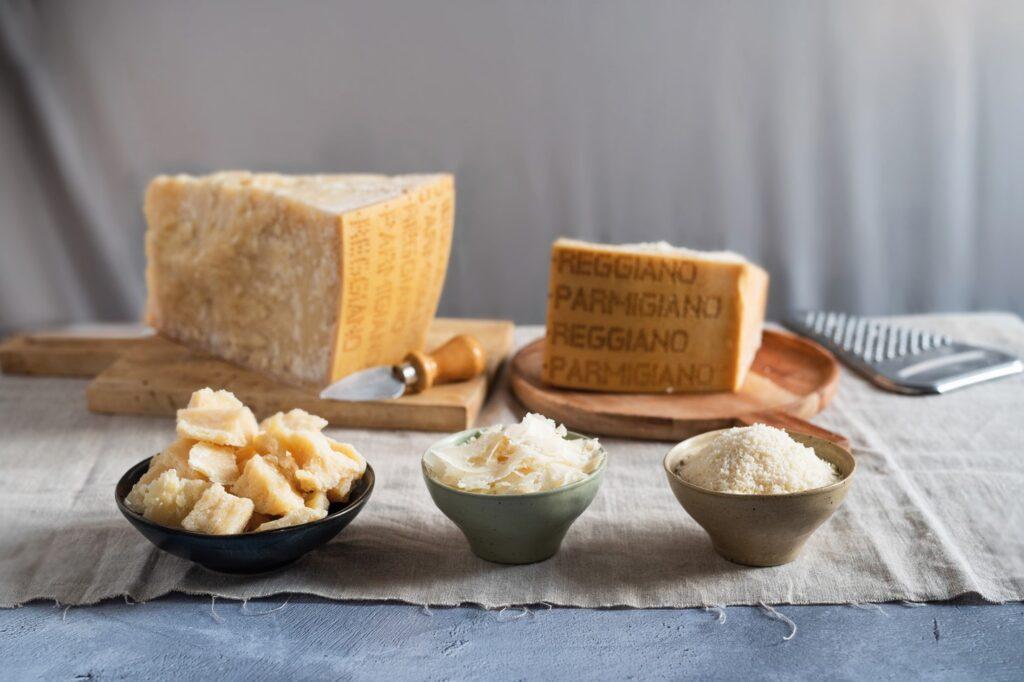Parmigiano Reggiano is held in high regard across the globe, and rightfully so. As one of the world’s oldest and richest cheeses, it’s a product that has always remained firmly bound to its territory. And it’s this sacred land that endows this dairy treasure with its incredible, legendary taste.
The history of Parmigiano Reggiano dates back to the Middle Ages, with the first written mention of a cheese from Parma appearing in a notarial deed from 1254, found in the State Archives of Genoa. It was monks who pioneered Parmigiano Reggiano production, as they wanted to create a dairy product that could travel well and remain preserved for a long time. They found a solution by increasing the wheel size of their cheese and allowing it to mass dry — and with this, Parmigiano Reggiano was born, laying the foundation for this remarkable Italian delicacy as we now know it.
Produced today as it was nine centuries ago, Parmigiano Reggiano holds strong ties to its origins. Since its beginnings, and as is continued today, it has been handcrafted using only three ingredients: milk, salt and calf rennet. The craftsmanship and production techniques have remained steadfast, with very few changes over the last several hundred years — owing to the decision to keep the cheese free of any additives. Its entirely natural production is governed by strict specifications registered with the European Union, as Parmigiano Reggiano holds Protected Designation of Origin (PDO) status.
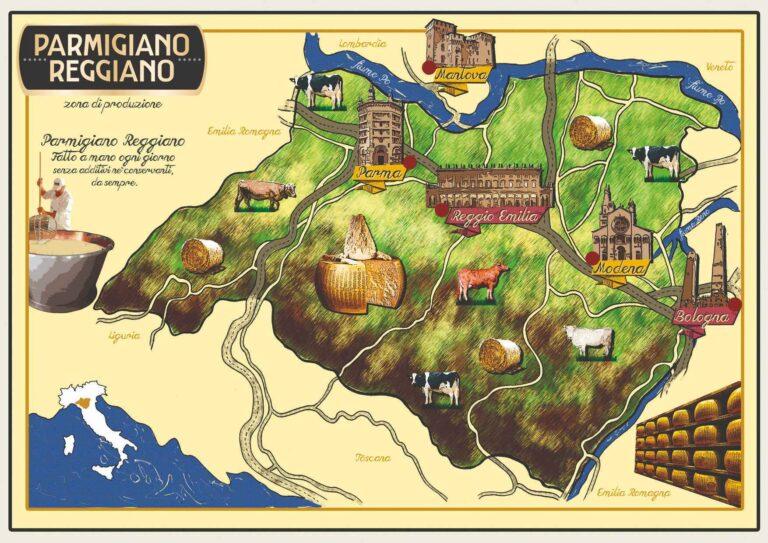
Authentic Parmigiano Reggiano can only be produced in Parma, Reggio Emilia, Modena, Mantua to the right of the Po river, and Bologna to the left of the Reno river.
A PDO product is one that has distinctive characteristics based on its links to a specific area of origin, and through the European Union’s system of PDO certification, it ensures that producers and consumers of such products are safeguarded from imitations. For a cheese to bear the Parmigiano Reggiano PDO mark, it has to be produced according to a precise set of rules. First and foremost, it must be made exclusively in the area of origin. From the production of the cow’s milk to the processing into cheese, the minimum twelve-month maturation, the packaging, and the Parmigiano Reggiano PDO grading, every step has to take place in the Italian provinces of Parma, Reggio Emilia, Modena, Mantua to the right of the Po river, and Bologna to the left of the Reno river.
Furthermore, Parmigiano Reggiano must be crafted using artisanal and natural methods as outlined in the Product Regulation and Specifications. These include rigorous Production Procedures and Standards, a special diet for cows known as the Feeding Regulation for Dairy Cattle, and rules for using the hot iron mark as part of the Marking Regulation. Only if the cheese meets these requirements can it be considered authentic Parmigiano Reggiano — the most genuine expression of “Made in Italy” agriculture.
Parmigiano Reggiano’s individualistic taste is an all-encompassing reflection of its territory, which means that no other cheese in the world can have the same traits. This unbreakable bond boils down to the microbiological characteristics of the raw milk used. By feeding on the vegetation specific to the area of origin, the cattle produce special milk, brimming with unique and intense bacterial activity. This microbial flora is influenced by region-dependent factors; in particular, the local forage, grass and hay that constitute the main feed of the cows dedicated to the production of Parmigiano Reggiano. The PDO diet specifications indicate that at least fifty percent of the cattle’s natural forage should be grown by the dairy farm, and at least 75 percent should be produced within the surrounding production area. Consequently, this has resulted in feed providers almost entirely comprising family-run farms with long-standing connections to the region.
Over and above the local forage, the regulations also outline that the feed must be entirely vegetable-based, containing cereals such as barley, wheat and corn. Additionally, only feed producers registered with the Feed Manufacturer List established by the Parmigiano Reggiano Cheese Consortium are permitted as suppliers. The stringent conditions for the raw materials that constitute the cows’ feed mean that some substances are forbidden, even though they may be common in standard animal fodder. Fermented feed, including silage, is among those which are banned, as they lead to the presence of bacteria in milk, such as heat-resistant clostridia spores, that cause harmful fermentations and result in defects in the cheese during its lengthy maturation. All in all, the strict guidelines ensure that the milk, and thus the final Parmigiano Reggiano wheels, do not develop tainted aromas or flavours or lose its typical qualities.
To further retain the cheese’s one-of-a-kind characteristics, the milk is used raw. This means that it does not undergo any heat treatments (it is not refrigerated or pasteurised), and therefore, it features all the richness of lactic ferments naturally present in it. Furthermore, additives and preservatives are strictly prohibited, including using enzymatic additives or laboratory-selected bacteria that would change the activity of the microbes inherent in the raw milk.
Once the Parmigiano Reggiano formation process begins, it’s the expertise of the cheese master that makes all the difference. Their skilled hands perform the time-honoured technique of enhancing and favouring the lactic bacteria that facilitate the positive lactic fermentations required for the success of Parmigiano Reggiano production. Once this step is complete and the cheese wheels have been formed, they move onto maturation, which ranges from a minimum of twelve months to 45-plus months.
The duration of maturation is what gives Parmigiano Reggiano its different flavours and textures, and these varying characteristics make it a remarkably versatile ingredient in the kitchen. During ageing, the action of the enzymes released by lactic bacteria causes proteins to break up into smaller pieces, free peptides and amino acids — the protein chain’s building blocks. Known as proteolysis, this mechanism of protein breakdown determines the structure and sensory properties of Parmigiano Reggiano.
At 24 months, Parmigiano Reggiano reaches a degree of maturation that fully expresses its typical characteristics, including a perfectly balanced richness of aromas and flavours on the nose and palate. Prior to this, between twelve and nineteen months of ripening, the cheese is crumbly and simultaneously sweet and sour, with delicate scents of milk, yoghurt and butter — ideal for use in salads and cold dishes. The maturation of 27-34 months creates a more robust taste with spicy and nutty notes. The texture is also particularly crumbly and works well in filled pasta or when eaten with fruit and honey after a meal. After this point, the cheese will become a darker yellow colour as it continues maturing, developing a more smoky and meaty flavour, best paired with a full-bodied red wine. No matter which selection is preferred, Parmigiano Reggiano will always gift diners a delicious eating experience marked by unexpected and unparalleled flavours and aromas.

